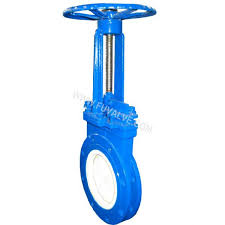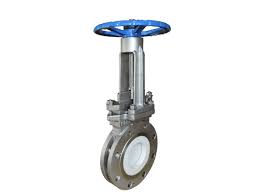Ceramic Knife Gate Valve

The Application of Ceramic Knife Gate Valve
Cameron, a leading manufacturer of industrial valves, offers a range of Abrasion-Resistant Ceramic Lined Check Valves that are ideal for a variety of applications, including the Ceramic Check Valve for Chemical Industry and Corrosion-Resistant Ceramic Lined Check Valves. These advanced ceramic-lined knife gate valves are designed to withstand the harshest environments, providing superior performance and extended service life. With their exceptional abrasion and corrosion resistance, these valves are particularly well-suited for use in the chemical industry, mining operations, and other applications where aggressive media and demanding operating conditions are present. The ceramic lining not only enhances the valve’s durability but also ensures smooth flow and improved system efficiency, making it a reliable choice for industrial operators seeking a robust and versatile valve solution.
What Are The Types Of Ceramic Knife Gate Valve?
1. Standard Ceramic Knife Gate Valve:
- This is the basic configuration of a ceramic-lined knife gate valve.
- It features a ceramic-coated gate and body that provide abrasion and corrosion resistance.
- Suitable for a wide range of applications handling slurries, chemicals, and other aggressive media.
2. High-Performance Ceramic Knife Gate Valve:
- Designed for more demanding applications with higher pressures and temperatures.
- Utilizes advanced ceramic materials and reinforced valve components.
- Offers enhanced durability and reliability in severe service conditions.
3. Bi-Directional Ceramic Knife Gate Valve:
- Capable of handling flow in both the forward and reverse directions.
- Suitable for applications with potential for backflow or flow reversal.
- Ensures positive shutoff and prevents media from flowing back through the valve.
4. Pneumatic/Hydraulic Actuated Ceramic Knife Gate Valve:
- Incorporates a pneumatic or hydraulic actuator for automated operation.
- Allows remote control and integration with process control systems.
- Ideal for applications requiring frequent valve cycling or where manual operation is not feasible.
5. Ceramic Knife Gate Valve with Position Feedback:
- Equipped with position sensors to provide feedback on the valve’s open/closed status.
- Enables better process monitoring and control.
- Beneficial for critical applications where precise valve position information is required.
What Is Ceramic Knife Gate Valve?
A Ceramic Knife Gate Valve is a specialized type of industrial valve that utilizes a ceramic-coated gate and body to provide exceptional abrasion and corrosion resistance. Unlike traditional metal valves, the ceramic lining of these valves allows them to withstand the harsh effects of aggressive media, such as slurries, acids, and other corrosive fluids, commonly found in industries like mining, chemical processing, and wastewater treatment. The knife gate design of these valves offers a tight shutoff and reliable performance, making them a preferred choice for applications where process integrity and long service life are critical. The combination of ceramic materials and the knife gate configuration results in a durable and versatile valve solution capable of handling the most demanding industrial conditions.
How to Select the Right Ceramic Knife Gate Valve?
When selecting the appropriate Ceramic Knife Gate Valve for an application, there are several key factors to consider:
Media Compatibility: Evaluate the properties of the media, such as pH, temperature, and abrasiveness, to ensure the ceramic lining can withstand the operating conditions. Corrosion-resistant and abrasion-resistant ceramic materials should be selected accordingly.
Pressure and Temperature Ratings: Determine the maximum pressure and temperature requirements of the system, and choose a valve with the appropriate pressure and temperature ratings to ensure safe and reliable operation.
Size and End Connections: Match the valve size and end connection type (e.g., flanged, threaded) to the dimensions of the piping system to ensure a proper fit and seamless integration.
Actuation Requirements: Decide whether a manual, pneumatic, or hydraulic actuation system is needed based on the valve’s operational requirements, such as frequency of use and need for remote control.
Regulatory Compliance: Ensure the Ceramic Knife Gate Valve meets any relevant industry standards or regulatory requirements for the specific application.
By carefully considering these factors, you can select the Ceramic Knife Gate Valve that best suits the needs of your process and ensures long-term, reliable performance.

Features of Ceramic Knife Gate Valve
Abrasion Resistance:
The ceramic lining of the knife gate valve provides exceptional resistance to abrasive wear, ensuring a long service life even in applications handling highly abrasive media such as slurries or particulate-laden fluids.
Corrosion Resistance:
The ceramic materials used in the valve construction are highly resistant to a wide range of corrosive chemicals, making them suitable for use in demanding industrial environments where aggressive media is present.
Thermal Stability:
Some ceramic knife gate valves are designed to withstand high temperatures, expanding their application range to include industrial processes that involve elevated operating temperatures.
Precise Shutoff:
The knife gate design of the valve ensures a tight, positive shutoff, preventing the flow of media in the closed position and minimizing the risk of leakage.
Bidirectional Flow:
Certain ceramic knife gate valve models are capable of handling flow in both the forward and reverse directions, making them suitable for applications with the potential for backflow or flow reversal.
Automated Operation:
Ceramic knife gate valves can be equipped with pneumatic or hydraulic actuators, enabling remote control and integration with process control systems for automated operation.
Advantages and Disadvantages of Ceramic Knife Gate Valve
Advantages of Ceramic Knife Gate Valve:
Abrasion Resistance:
The ceramic lining provides exceptional resistance to abrasive wear, extending the valve’s service life in applications handling abrasive media.
Corrosion Resistance:
Ceramic materials offer superior corrosion resistance, allowing the valve to withstand aggressive chemicals and harsh environments.
Thermal Stability:
Certain ceramic knife gate valves can operate at elevated temperatures, expanding their application range.
Tight Shutoff:
The knife gate design ensures a tight, positive shutoff, minimizing the risk of leakage.
Bidirectional Flow:
Some models can handle flow in both forward and reverse directions, providing flexibility.
Automated Operation:
Availability of pneumatic or hydraulic actuation enables remote control and process integration.
Disadvantages of Ceramic Knife Gate Valve:
Higher Cost:
Ceramic valves tend to be more expensive than their metal counterparts.
Potential Fragility:
Ceramic materials, while resistant to abrasion and corrosion, can be more brittle and susceptible to cracking or fracturing under high stress.
Limited Size Range:
Ceramic knife gate valves may not be available in as wide a range of sizes as metal valves.
Specialized Maintenance:
Proper handling and maintenance procedures are essential to preserve the integrity of the ceramic components.
The Specifications of Ceramic Knife Gate Valve
| Specification | Value |
|---|---|
| Type | Ceramic Knife Gate Valve |
| Ball Material | Ceramic |
| Attachment Type | Flanged |
| Thread Standard | ANSI B16.5 |
| Thread Size | 4 inch |
| Body Material | Cast Iron with Ceramic Lining |
| Safe for Use With | Acids, Slurries, Corrosive Fluids |
| Handle Type | Handwheel |
| Handle Material | Cast Iron |
| Maximum Working Pressure (psi) | 150 psi |
| Maximum Working Pressure (bar) | 10 bar |
| Operating Pressure | 100 psi (6.9 bar) |
The Installation Steps for Ceramic Knife Gate Valve
Preparation:
- Ensure the valve is the correct size and type for the application.
- Inspect the valve for any damage or defects prior to installation.
- Prepare the pipeline by thoroughly cleaning and deburring the mating surfaces.
Orientation:
- Determine the correct orientation of the valve based on the direction of the flow.
- Position the valve so that the flow arrow on the body matches the actual direction of the fluid flow.
Mounting:
- If the valve is flanged, align the bolt holes and use appropriate gaskets between the valve and the pipeline flanges.
- Tighten the flange bolts in a cross-pattern to the recommended torque specification.
- For threaded connections, apply thread sealant and carefully thread the valve into the pipeline, taking care not to cross-thread.
Actuator Installation:
- If the valve is equipped with a pneumatic or hydraulic actuator, connect the actuation system according to the manufacturer’s instructions.
- Ensure the actuator is properly sized and oriented for the valve’s operation.
Leak Testing:
- Perform a leak test on the installed valve to ensure there are no fluid leaks.
- Check the valve in both the open and closed positions for any signs of leakage.
Commissioning:
- Slowly introduce the process media to the valve, observing for proper operation and any potential issues.
- Adjust the valve as necessary to ensure smooth and reliable performance.
Documentation:
- Record the installation details, including the date, location, and any specific instructions or observations.
- Maintain the documentation for future reference and maintenance purposes.
The Operation Theory of Ceramic Knife Gate Valve
Operation Theory of Ceramic Knife Gate Valve:
The operation of a Ceramic Knife Gate Valve is based on the linear movement of a knife-like gate that opens and closes to control the flow of media through the valve. When the gate is in the open position, the ceramic-lined opening allows the media to flow freely through the valve. When the gate is closed, it creates a tight seal, preventing the media from passing through.
The key aspects of the Ceramic Knife Gate Valve’s operation include:
- Knife Gate Design: The sharp, knife-like gate provides a tight shutoff when closed, minimizing the risk of leakage.
- Ceramic Lining: The ceramic material lining the valve body and gate offers exceptional resistance to abrasion and corrosion, ensuring reliable performance even in harsh environments.
- Actuation: The valve can be operated manually or equipped with pneumatic, hydraulic, or electric actuators for automated control and remote operation.
- Bidirectional Flow: Certain models are capable of handling flow in both forward and reverse directions, providing increased flexibility.
Ceramic Check Valve for Mining Applications:
Ceramic check valves are well-suited for mining applications due to their ability to withstand the abrasive and corrosive nature of the media encountered in these environments. The ceramic components, including the valve body and internals, provide superior resistance to wear and chemical attack, ensuring a longer service life compared to traditional metal check valves.
High Temperature Ceramic Lined Check Valve:
High temperature ceramic lined check valves are designed to operate in applications with elevated temperatures, such as hot process streams or industrial furnaces. The ceramic lining not only provides abrasion and corrosion resistance but also maintains its structural integrity at high temperatures, preventing degradation of the valve components. This makes them suitable for use in a wide range of high-temperature industrial processes.
